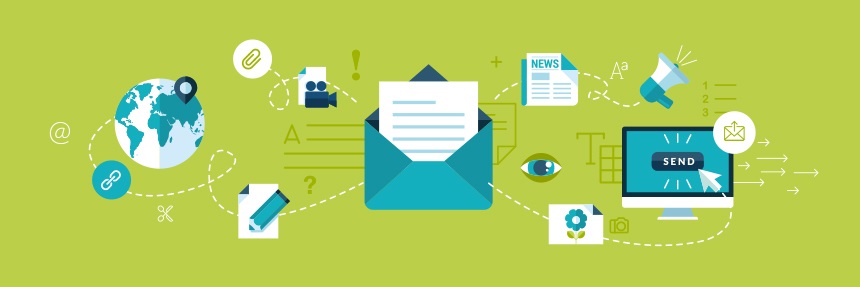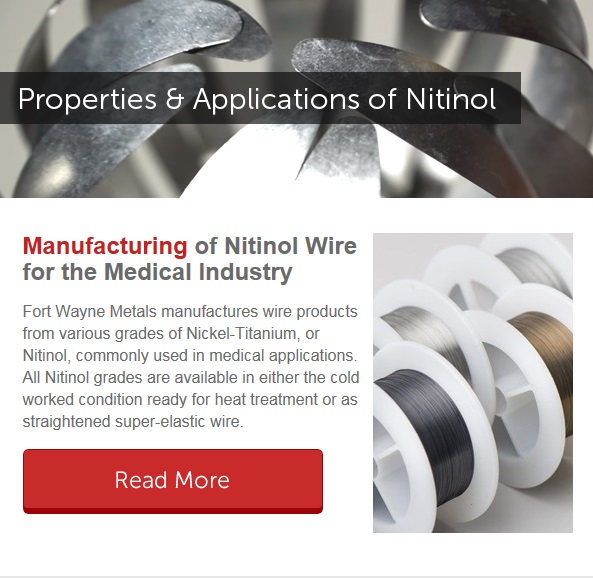
Despite being one of the oldest forms of digital marketing, email and e-newsletter campaigns have evolved over time to become an integral part of modern marketing tactics, providing real value to both prospects and existing customers. However, measuring the results of an email campaign isn't always as easy as running it.
Nearly 40% of Marketers struggle to measure the effectiveness of a campaign
That's a startling statistic, especially considering that B2B interactive marketing spend in 2016 is forecast to reach $77billion!
We have laid out below some key considerations and how taking a scientific approach to the setup, execution and analysis of data is the best way to ensure success with email campaigns.
Target and Segment
When first starting out, it is tempting to send a newsletter or offer to anyone and everyone that asks for more information, but you must think about the objective of the e-mail and whether the person receiving that email will truly benefit from the information – Do you want them to download a whitepaper, register for a webinar or is it simply an educational piece that strengthens your relationship with the reader?
Unless you are sending targeted content to people who have an interest in that topic area, then you have lost before you even start.
Therefore, it is often better to segment your audience and tailor the content accordingly. For example, we currently run over 60 targeted subject specific newsletters across Science and Industry as well as a range of Medical Conditions, each tailored to a specific audience based on the topic they have shown interest in. Don’t send irrelevant information just for the sake of a large mailing list, because it won’t benefit anyone long (or even short!) term.
Daily business e-mail traffic is expected to reach over 143 Billion by 2016
That’s right, daily! Your analytical scientist is naturally geared to tune out the noise, so it’s important to convey the value you can offer them as soon as you capture their attention.
That starts from the Subject Line, if you have targeted your audience correctly you should hopefully know how to appeal to them, below are some examples of ways we have successfully used related keywords, applications or techniques to convey the value of the e-mail instantaneously to several very specialised, educated, technical audiences.

Focus on the content
In 2015, the Average Attention Span was…
A meagre 8.25 seconds (and well done for getting this far by the way!) Combine this with the fact that only 4% of pages are read for 10 minutes or more, it is imperative that you select the right content for your audience.
If the content is good, then the clicks, downloads and conversions will naturally follow. What counts as ‘good content’ can vary from industry to industry and requires you to know your audience and their requirements.
For a Scientific audience, we have found that consumers will always be interested in content that truly educates or helps solve a specific problem. Here are our most popular forms of valuable content:
- Thought Leader Interviews – When your customers are highly respected in their field, these key opinion leader interviews double up as a subtle shining testimonial for your products and equipment.
- General Interest Content – You readers want to learn! Educate and tell them something they didn’t know, build that relationship and in turn it will be reciprocated!
- Enhanced Product Profiles – Gone are the days where you can mass mail a product promotion, provide additional reader value with videos, image galleries, customer quotes and related applications.
- Application Specific Information – Paint a picture for your users and demonstrate how you can provide solutions for specific applications.

Remember, education is key. Thin, heavily promotional content will rarely get people excited no matter what industry you work in.
Make it Legal!
Of course you wouldn’t intentionally send out an illegal email, however as there can be variation from country to country (particularly in Europe!) it can take time to fully understand the legislative dos and don’ts.
It is worth putting in the due diligence to ensure that all the great content you are sending out to a willing audience continues to be received! Some basics include providing clear unsubscribe options, honouring unsubscribes, and using subject lines that accurately reflect the newsletter content. A good starting point, provided by the FTC, can be found here.
Design for success
72% of US online adults send or receive personal emails via smartphone at least weekly (Forrester)
Make sure the e-mail is mobile responsive and optimised across devices. As with your website, user experience is also key and a great deal of this can be attributed to the design which should be clean, concise and intuitive. Also, ensure that the content you most want to highlight is front and centre and any next steps are highlighted with obvious call-to-actions (CTAs).
Don’t Overdo it
Remember the 143bn daily emails? Make sure your email has genuine value to the reader and that every edition is as good as the first. Even one sub-par edition can put people off opening your newsletter again.
At AZoNetwork, all newsletter topics are scheduled to run based on how much quality, relevant content is available. If there is not enough great content, then it won’t go out.
Know your metrics
Open rate. Click rate. Downloads. MQLs. Unsubscribes. Click-to-Open Rate. There are hundreds of ways you can measure the success of your email campaign, all with their own benefits and drawbacks.
Repeat and refine
Continuous analysis is key to ensuring that your campaigns are as optimized as possible. Companies are often looking for a ‘silver bullet’ when it comes to send out variables, such as send-out times, subject lines and the like. Although there is extensive research in these areas, some of which may be applicable to your business, the truth is it is up to you to measure what is working for contacting your audience, and optimise accordingly. Some variables that can affect the success include:
- Send out time – What day of the week are your users most active? And at what time of the day? Should you stagger send out across different time zones?
- Number of CTAs and landing pages - How important is people clicking through and where do you want to direct them?
- Volume of content per edition - Do you want to give an extensive monthly run down of 12 pieces, or do you want people’s attention focussed on one or two pieces of content?
- Type of content included – will it be press releases, equipment listings, long form article content or infographics?
- Design – Do people respond better to different email layouts?
Ultimately, an easy-to-use analytics tool and regular A/B testing is the best way to get the most from your campaign.
Despite all the considerations that need to go into email marketing campaigns, they remain a relatively easy, inexpensive marketing action, which when done correctly can provide significant ROI – Contact us for a consultation and we will advise you on the best available solutions.
Sources
http://www.prnewswire.com/news-releases/survey-shows-many-marketers-are-behind-in-use-of-data-targeting-and-measurement-143303436.html
http://www.pewinternet.org/2011/08/09/search-and-email-still-top-the-list-of-most-popular-online-activities/
http://www.statisticbrain.com/attention-span-statistics/